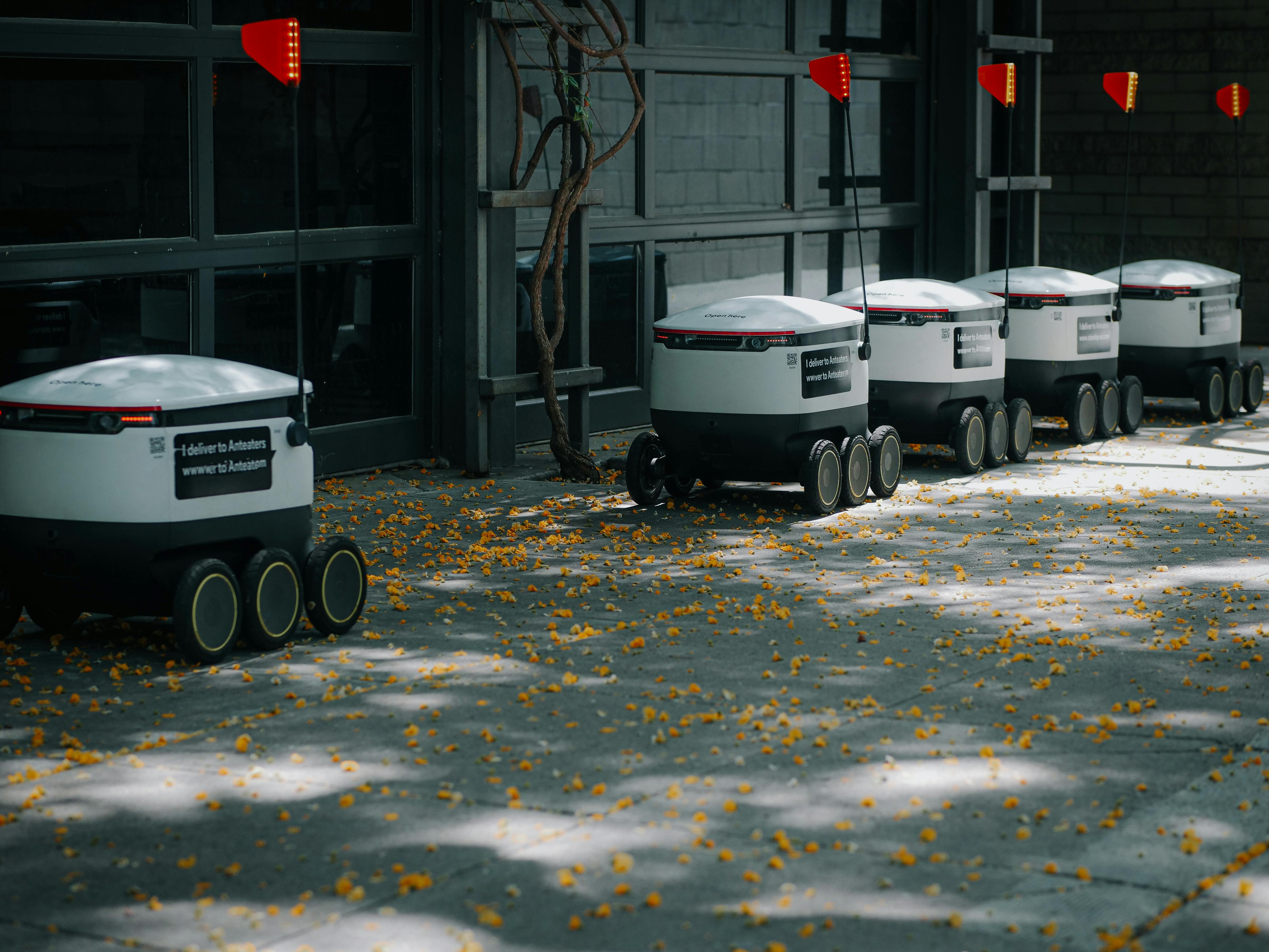
AI’s Deep Dive into Industries: Transforming Work and Life
AI is no longer a general-purpose technology; its impact is becoming deeply specialized, driving transformative changes across specific industries. As of mid-2025, we’re seeing AI move from a supporting role to a core component in many business strategies.
Revolutionizing Software Development
The world of software development is experiencing a profound shift thanks to AI. Tools like GitHub Copilot, Google’s Gemini Code Assist, and others are making coding faster, more efficient, and more accessible. AI can now not only generate code snippets based on plain-language prompts (“vibe coding”) but also review code for bugs, suggest optimizations, and even automate repetitive coding tasks. Reports indicate that AI can handle as much as 30-50% of a developer’s workload, significantly increasing productivity and reducing the time needed to bring software to market. Platforms are seeing widespread adoption, with millions of developers relying on AI assistants daily. While AI handles the intricate coding, developers can focus on higher-level design, problem-solving, and innovation, essentially enhancing the human element of software creation rather than replacing it. Companies like Wayfair have seen substantial environment setup speedups using these tools, showcasing real-world efficiency gains.
Reshaping Finance: Efficiency, Security, and Access. Find out more about Generative AI trends 2025 evolution.
The financial sector is a prime example of AI’s transformative power, promising billions in annual value through productivity improvements. AI is enhancing fraud detection with sophisticated pattern recognition, automating customer service with intelligent chatbots, and providing more accurate financial forecasting. For instance, AI platforms like Zest AI are not only helping lenders approve more loans by identifying good borrowers but are also actively challenging human bias, leading to significant increases in approvals for minority groups while maintaining low risk. This indicates AI’s potential to create a more equitable financial system. Similarly, AI-powered investment analysis tools can process company filings and financial data at speeds far exceeding human analysts, allowing firms to identify opportunities and risks much faster. This drive for efficiency and enhanced security is propelling AI adoption across banking, investment, and insurance sectors, aiming to increase profits and improve customer experiences.
Healthcare’s AI Frontier: Precision, Discovery, and Automation
In healthcare, AI is moving from auxiliary tools to integral patient care solutions. Estimates suggest that AI could automate over 25% of tasks performed by healthcare professionals, leading to billions in annual cost savings. AI is already well-established in areas like radiology and pathology, with hundreds of FDA-approved AI-enabled devices assisting in diagnosis and patient monitoring. The real excitement lies in areas like precision medicine, where AI analyzes individual patient data – including DNA, medical history, and imaging – to recommend highly tailored treatment plans. Companies are using AI to accelerate drug discovery, mining massive datasets to identify promising molecules and predict their efficacy, drastically reducing the time and cost of bringing new medicines to market. Tools like Google’s AlphaFold3 and platforms from companies like Exscientia and Verge Genomics are at the forefront, making AI an indispensable partner in advancing human health and combating diseases.
The Environment: AI’s Dual Role in Sustainability and Impact
The relationship between AI and the environment is complex, presenting both challenges and incredible opportunities. On one hand, the energy demands and manufacturing processes associated with AI can have a significant environmental footprint, contributing to emissions and resource depletion. For example, Google has noted the environmental impact of AI as a factor in meeting its net-zero targets, with AI overviews consuming considerably more power than traditional searches. The manufacturing of computer chips, a cornerstone of AI, requires vast amounts of energy and water and generates hazardous waste.. Find out more about Autonomous AI agents capabilities guide.
However, AI is also emerging as a powerful tool for environmental solutions. PwC estimates that AI applications could reduce global greenhouse gas emissions by as much as 4% by 2030. AI excels at analyzing massive environmental datasets to identify trends and make predictions, helping us understand climate change, monitor natural resources, and develop sustainable practices. For instance, AI is used to measure changes in icebergs, optimize water usage in agriculture, reduce food waste in restaurants, and decrease energy consumption in factories. In the clean energy sector, AI is instrumental in planning wind farm construction and improving turbine monitoring, potentially increasing their lifespan. Furthermore, efforts are underway to make AI infrastructure itself more sustainable, with data centers designed for energy efficiency and water conservation, aiming to maximize the efficiency of the entire infrastructure.
Navigating the AI Landscape: Ethics, Regulation, and Trust
As AI systems become more powerful and pervasive, the conversations around their ethical implications and regulatory frameworks are intensifying. Ensuring AI is developed and deployed responsibly is paramount to harnessing its benefits while mitigating risks.
The Growing Imperative for Responsible AI. Find out more about Multimodal AI adoption and trends tips.
The core tenets of responsible AI focus on developing and deploying technology in a fair, transparent, and trustworthy manner. This involves actively working to minimize bias in algorithms, protect user data, and provide mechanisms for accountability. As AI models become more capable, addressing issues like “hallucinations” – AI generating factually incorrect information – and understanding why a model makes certain decisions (mechanistic interpretability) becomes critical, especially for companies in regulated industries like finance.
While many tech giants, including Microsoft, Amazon, and Google, have made voluntary commitments to responsible AI practices, there’s a growing recognition that self-regulation may not be sufficient. This leads to increased calls for governmental oversight to ensure safety and fairness. The challenge lies in striking a balance between fostering innovation and implementing necessary safeguards, a debate that is shaping policy discussions worldwide. Building public trust in AI remains a significant hurdle, with surveys showing a considerable portion of the population expressing concerns and skepticism about the technology’s reliability and impact.
The Regulatory Maze: Global and National Approaches
Governments worldwide are grappling with how to regulate AI. The European Union has taken a leading role with its comprehensive “Artificial Intelligence Act,” establishing an AI Office and categorizing AI systems by risk level to impose appropriate checks and regulations. In the United States, while federal legislation is still evolving, executive orders are beginning to require the sharing of safety test results for the most powerful AI systems with the government. At the state level, Colorado has enacted legislation mirroring the EU’s approach by defining “high-risk” AI systems and imposing duties to prevent bias and discrimination, effective in early 2026.
These regulatory efforts are crucial for establishing guardrails around AI development. However, some industry leaders express concerns that overly strict regulations could stifle innovation and put countries at a disadvantage in the global AI race. The ongoing dialogue between policymakers, industry leaders, and the public is essential to navigate this complex terrain and establish a framework that promotes both progress and public good.. Find out more about AI impact on healthcare industry strategies.
Building Trust in an AI-Driven World
Ultimately, the widespread adoption and acceptance of AI hinge on trust. This trust is built not only through ethical development and sensible regulation but also through robust testing and clear measurement of AI performance. Companies are investing heavily in testing methodologies to identify and mitigate risks, including sophisticated adversarial attacks and the aforementioned “hallucinations.”
Furthermore, users are gaining greater control over how AI operates within their environments, allowing for customization and the establishment of specific guardrails. This personalization and control empower individuals and organizations to tailor AI applications to their unique needs and comfort levels. As AI continues to permeate our lives, transparency about its capabilities, limitations, and the measures taken to ensure safety and fairness will be key to fostering a trusting relationship between humans and intelligent machines.
The year 2025 is proving to be a watershed moment for Artificial Intelligence. We’ve moved past the initial awe of generative capabilities to embrace AI agents capable of independent action, multimodal systems that understand the world more holistically, and increasingly specialized applications transforming industries from finance to healthcare. While the technological advancements are breathtaking, it’s the accompanying focus on optimization, efficiency, ethical development, and thoughtful regulation that will truly shape AI’s long-term impact.
Key Takeaways for September 15, 2025:. Find out more about Generative AI trends 2025 evolution overview.
- Smarter Generative AI: LLMs are more capable of reasoning and accuracy, leading to better tools for complex problem-solving and creative content generation.
- Autonomous Agents: AI agents are becoming a reality, managing tasks with increasing autonomy, reshaping workflows in businesses and offering personal assistance.
- Multimodal Understanding: AI’s ability to process text, images, and audio simultaneously is unlocking deeper insights and more intuitive applications.
- Industry Transformation: AI is driving significant efficiency, innovation, and cost savings across sectors like software development, finance, and healthcare.. Find out more about Autonomous AI agents capabilities definition guide.
- Sustainability Challenges & Solutions: AI presents a dual narrative – it’s energy-intensive but also a critical tool for addressing environmental issues.
- Ethical & Regulatory Focus: Responsible AI development, bias mitigation, and clear regulatory frameworks are now central to AI’s growth.
As AI continues its relentless march forward, staying informed is no longer optional; it’s essential. Whether you’re a professional looking to leverage AI for efficiency, a creator exploring new artistic avenues, or simply a curious individual trying to understand the future, engaging with these trends is key.
What AI advancements are you most excited or concerned about? How do you see AI agents changing your daily routine in the next year? Share your thoughts in the comments below!
For more insights into the latest AI developments, explore these resources:
- AI’s Next Leap: 5 Trends Shaping Innovation and ROI in 2025
- Future of AI: 7 Key AI Trends For 2025 & 2026
- 6 AI Trends You’ll See More of in 2025
Interested in how AI is changing specific fields? Check out our articles on generative AI, the future of AI agents, and breakthroughs in AI drug discovery. We also delve into the importance of responsible AI practices and the underlying technology in custom silicon.
